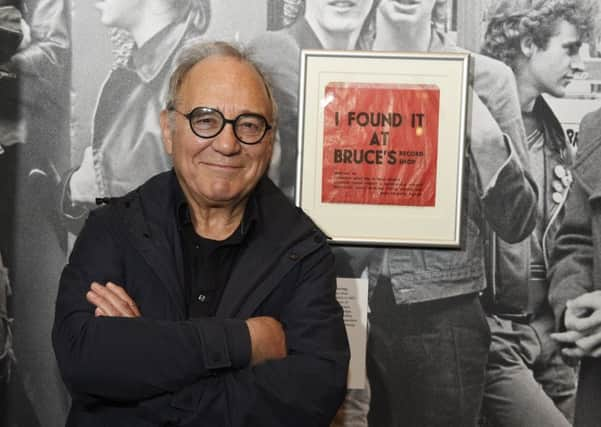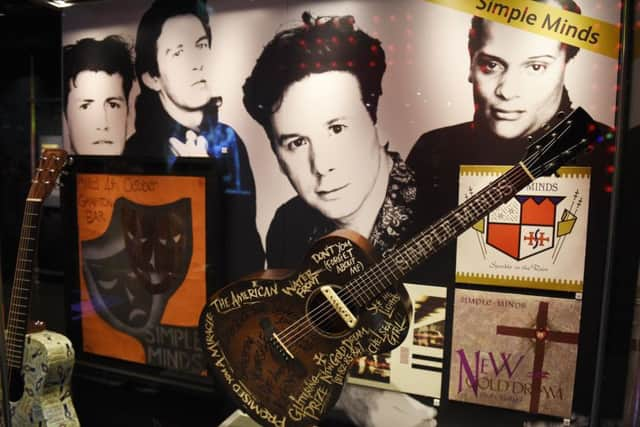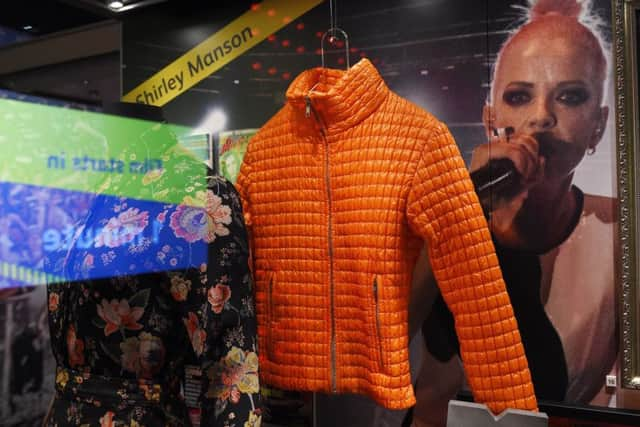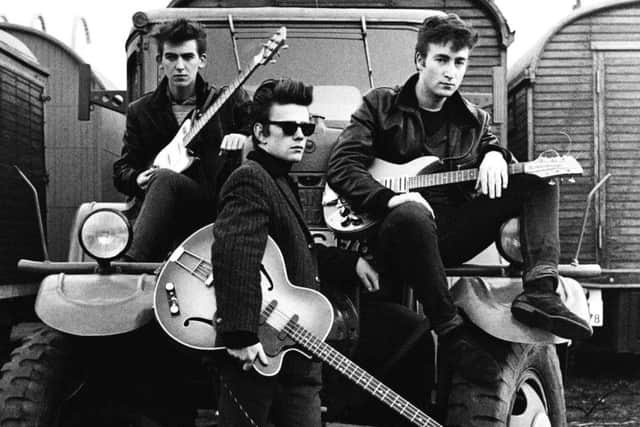Be there, or be square, it's time to Rip It Up


So who better to explore the National Museum of Scotland’s new exhibition Rip It Up: The Story of Scottish Pop with.
A blast of Bay City Rollers greets us as we step into the darkened display hall housing cabinet after cabinet of costumes, memorabilia, instruments and props, most on loan from pop stars including Shirley Manson, Lulu, Gerry Rafferty, Simple Minds, Texas and many more - there are 300 items in total, many on display for the first time.
Advertisement
Hide AdAdvertisement
Hide Ad“From what I can gather, a lot of the artists themselves have contributed stuff rather than their managements and record companies,” says Bruce, who has already had a sneak preview of the exhibits.


“That makes it a lot more personal. That’s what I like, there’s a personal touch. It’s the artist giving their favourite quirky things that make it fascinating.”
Things don’t come much more quirky than the guitar covered in pale blue Embassy Regal cigarette coupons, loaned to the exhibition by Simple Minds, who Bruce discovered then managed from 1978 to 1990.
It seems the perfect place to start as the memories flow.
“Simple Minds huge success is well documented but for me, this brings back early memories of meeting the band as a bunch of teenagers.


Advertisement
Hide AdAdvertisement
Hide Ad“They came to my office in Edinburgh from Glasgow and just did not look like Glaswegians... I don’t know how Glaswegians are meant to look mind you, but they looked like art college kids, very po-faced and serious, with eye-liner and stuff.
“What really impressed me was, first, Jim Kerr’s intense hunger to learn and to know about the business, but even better was their five song demo, which just blew me away.
“I hung out with the band for the next few months as we got to know each other before I signed them. That was a special time.
“It’s funny, we got a lot of gigs in Edinburgh once I’d signed them and their first record came out and, ironically, people in Glasgow thought they were from here.”


Advertisement
Hide AdAdvertisement
Hide AdBruce’s passion for pop music is evident as we wander between the glass cases, stopping as items catch the eye.
“I love popular music in general, worldwide,” he says.
“I don’t think of boundaries but being from Scotland I always had a healthy wee chip on my shoulder that England came first when new records came out, or that England got all the best concerts, or seemed to produce the best bands.
“Scotland was always treated a bit second rate. What gets me when I walk around this exhibition is the evolution of the Scottish music scene; from the very early days when everyone had to emigrate to London, artistes like Lulu, Marmalade and my friends The Average White Band.
It was almost impossible to get a record deal from Scotland.
Advertisement
Hide AdAdvertisement
Hide Ad“Seeing the evolution over the decades is fabulous, especially for me as a I span all these decades. That’s what fills me with pride, I like to think I was a small part of that evolutionary process.”
Passing Eric Faulkner’s tartan-trimmed Bay City Rollers costume, then Shirley Manson’s bright orange ‘agnes b’ stage jacket, Bruce reflects, “The Beatles opened the doors for everyone, a good Scottish band The Beatles.”
He only speaks half in jest, as becomes clear when he adds, “John Lennon used to go to the same picture house as me, the The Roxy on Gorgie Road.
“He’d come and stay with his aunty at Murrayfield and John and his cousin would go to The Roxy together.
Advertisement
Hide AdAdvertisement
Hide Ad“And, of course, Stuart Sutcliffe, The Beatles original bass guitarist, was born in Edinburgh. So without Scotland there would have been no Beatles.”
Passing displays dedicated to The Proclaimers, Fish and Marillion, the Capital is well represented in this new Scottish Pop Hall of Fame.
“Edinburgh’s done well,” agrees Bruce. “The Incredible Sting Band. Iconic. Bay City Rollers. Iconic. Young Fathers, Finitribe... our artists tend to be quirky, unique, unconventional.
“Edinburgh might be thought of as the staid Capital but in actual fact we have produced the most outrageous, weirdest, wacky and wonderful pop.”
Advertisement
Hide AdAdvertisement
Hide AdDespite an encyclopedic knowledge of the genre, Bruce is keen to share a couple of exhibits that took him by surprise.
“I’m looking for the CD?” he says cryptically to Susan, who is looking after us. She nods and leads the way, knowing exactly what he means.
The CD in question has a tragic tale to tell. It’s a copy of Runrig’s live album Access All Areas Volume 2, which was recovered from the wreckage of the Space Shuttle Columbia.
The information card reveals it belonged to astronaut Dr Lauren Clark who had chosen it as a wake-up call on the final day of the mission.
Advertisement
Hide AdAdvertisement
Hide Ad“This fascinated me. It has been into space. It’s poignant and I had a lump in my throat when I read it’s the actual item.”
Across the way, another exhibit he spotted is a set of cymbals, not just bashed but broken and shattered in parts.
“These cymbals, from Young Fathers, have been battered to pieces, he hits them so hard. That is some impact,” says Bruce who regards the band as the “current inheritors” of the Scottish pop crown.
“That’s the great thing about being in a band,” he muses, “going off in an aeroplane to another part of the world with a guitar in your hand. Guitars not guns. That’s what I say. You’re welcome everywhere you go.
Advertisement
Hide AdAdvertisement
Hide AdHe continues, “A phenomenal number of greats have come out of Scotland and here they all are gathered together. There is so much to take in, I’m going to have to go around three of four times to spot everything.
“Everyone goes on about whisky and oil being our greatest exports; one poisons, the other poisons too.
“Give me music any day. It’s our single best export.”
So what would he say to anyone swithering over whether Rip It Up is for them?
“Be there, or be square,” he declares without hesitation.
Rip It Up - The Story of Scottish Pop, National Museum of Scotland, Chambers Street, Gallery 1, Level 3, until 25 November, 10am-5pm, £10 (£8), Child (12-15) £7, Under 12’s free (National Museums Scotland Members free)